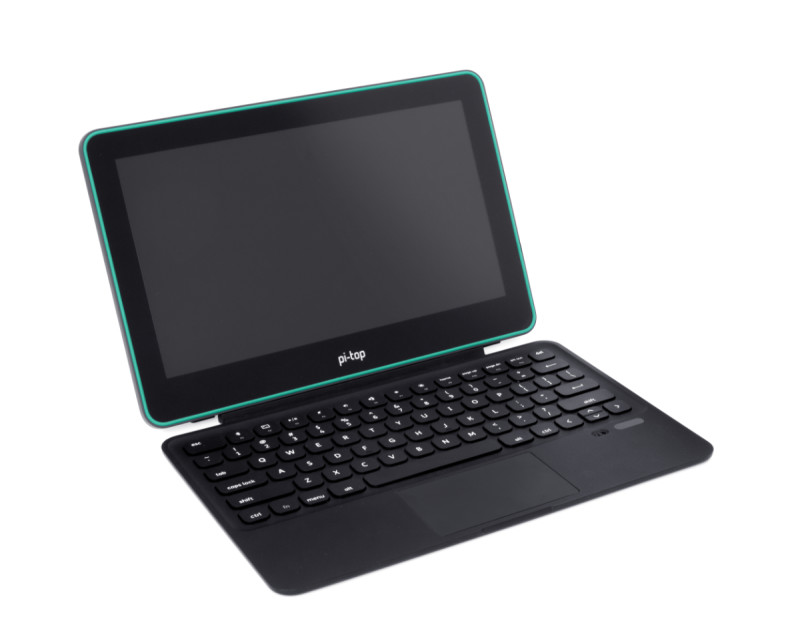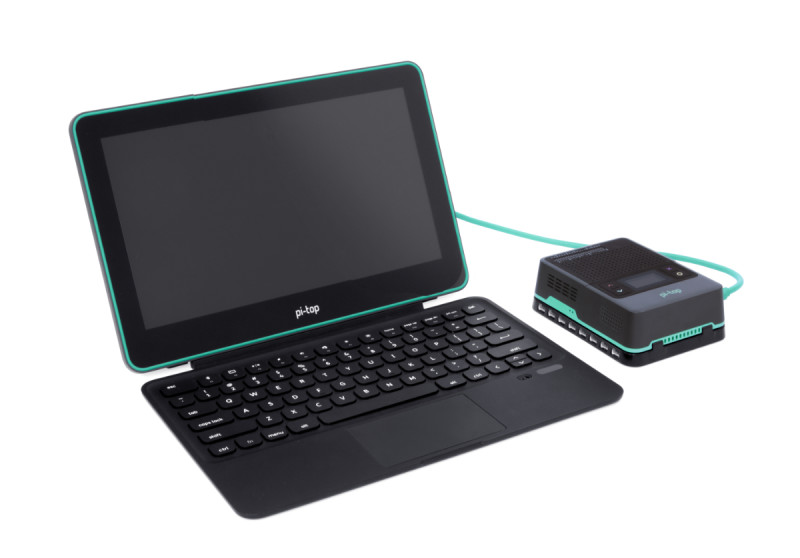The two parts are sold separately, but designed to work together. The result resembles a Raspberry Pi-based Microsoft Surface laptop. To the rear is an adjustable kickstand, which the pi-top [4] case clicks onto. An 80cm display cable connects the two elements. The length ensures you can disconnect the pi-top [4] and have it sitting to one side.
Weighing it up
Altogether, the keyboard, screen, pi-top [4] DIY Edition, and display cable weigh in at 1620g. Not spritely for a tablet computer, but light enough for us to throw in a backpack and take to the coffee shop. It was stylish enough to use without raising any eyebrows.
There’s an elephant in the room that we should address. Together, the FHD Touch Screen and Bluetooth Keyboard will set you back £242. This is on top of £95 for the pi-top [4] DIY Edition case. And you will need to supply your own Raspberry Pi 4 (from £35, or £54 for the 4GB model tested here). So you are looking at around £370-£400 for this setup.
With that elephant firmly kicked out of the room (for now) we are pleased to report that everything we tested was fantastic.
FHD Touch Display
![The pi-top [4] DIY Edition clips to the kickstand for a neat all-in-one solution](http://images.ctfassets.net/2lpsze4g694w/t5CQN9tX5EPkoRHIazywp/4d6c75644565337f4a55c635d9e38cfa/Screen_Keyboard__4__Attached.jpg?w=800)
First up is the 11.6-inch touchscreen display with a resolution of 1920×1080 at 190ppi (pixels per inch). It’s a great display, although the chunky bezels are a tad retro.
It is a ten-point capacitive touchscreen and we found it highly responsive. While there is no multi-touch interface support in either pi-top OS or Raspberry Pi OS, it’s very useful to tap buttons and interface elements.
Bluetooth Keyboard

The Bluetooth Keyboard clips to the base of the screen (again, magnetically) via a connector. There is no need to pair the keyboard. However, set up Bluetooth and you can disconnect the keyboard and use it to one side. We found it an absolute joy to type this review out on it.
Along the function keys sit a selection of shortcuts, including a dedicated Terminal key that we quickly fell in love with.
Below the keys is a multi-touch trackpad and, by Jove, they have cracked it. There is no accidental thumb touching, no awkward cursor jumping, and you can left- and right-click with ease. This is the only time we have encountered a Raspberry Pi laptop with a fully decent touchpad.
pi-top OS
We spent a couple of hours in Costa writing this review. With pi-top [4], Raspberry Pi comes together into one neat package that’s a delight to work on. All that really leaves is the price, and once again the elephant shows its snout.
It is a big step up from using a Raspberry Pi with a repurposed keyboard, mouse, and monitor. On the other hand, it is considerably cheaper than a Microsoft Surface. And Raspberry Pi is a much more fun and useful computer.
Verdict
9/10
This setup is packed with clever ideas and we love the keyboard, touchpad, and Raspberry Pi integration. Hands-down the best way to use Raspberry Pi on-the-go.








